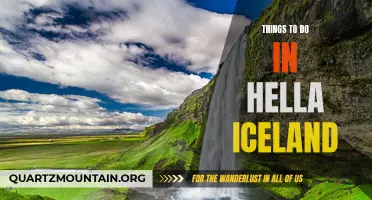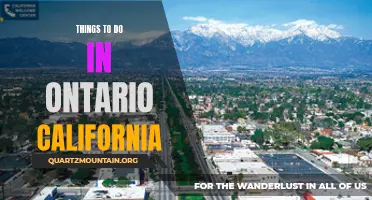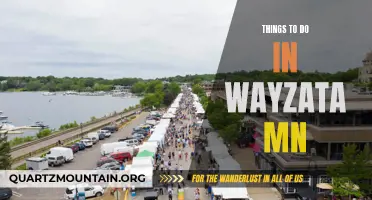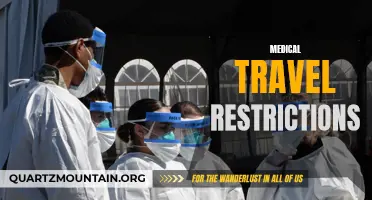
Picture this: you're driving down the road, listening to your favorite song on the radio, when suddenly you're stopped by armed soldiers at a checkpoint. They demand to see your identification and ask where you're headed. Welcome to life under martial law, where travel restrictions are the name of the game. From curfews to closed borders, martial law puts a whole new spin on the concept of freedom of movement. In this article, we'll explore the fascinating world of martial law travel restrictions and what they mean for citizens living under its iron fist.
What You'll Learn
- What is martial law and how does it affect travel restrictions?
- How do martial law travel restrictions differ from regular travel restrictions imposed during emergencies?
- What are some examples of countries that have implemented martial law travel restrictions in the past?
- How long do martial law travel restrictions typically last, and when are they usually lifted?
- What measures are usually put in place to enforce martial law travel restrictions?

What is martial law and how does it affect travel restrictions?

Martial law is a term that refers to the temporary imposition of military control over a territory or country. It is usually declared by the government in response to a severe crisis or emergency situation, such as war, civil unrest, or natural disasters. During martial law, the military assumes authority over the civilian government and enforces stricter regulations and policies to maintain order and security.
One of the major impacts of martial law is the imposition of travel restrictions. These restrictions aim to control the movement of people within the affected area or even between different regions of the country. The military may set up checkpoints and roadblocks to monitor and control the movement of vehicles and individuals. People may be required to present identification, undergo searches, and have their belongings inspected.
Travel restrictions during martial law can have significant effects on various aspects of travel, including transportation, tourism, and daily commuting. Public transportation systems may be disrupted or suspended completely to prevent unauthorized movement. Airports and seaports may be heavily monitored, and commercial flights or maritime activities may be restricted or canceled.
Tourism is also greatly affected during martial law. Tourists may be advised or required to leave the affected area or country, and incoming tourists may face numerous obstacles, such as visa restrictions, limited transportation options, and potential safety risks. Travel agencies and tourism-related businesses may face significant losses as people cancel or postpone their travel plans.
For daily commuting, travel restrictions can make it difficult for people to go to work, school, or attend important events. Certain areas may be designated as no-go zones, and individuals may require special permits or authorization to enter or leave these areas. The military presence and the overall atmosphere of uncertainty can also discourage people from traveling unless absolutely necessary.
Martial law is a legal measure taken by the government to ensure public safety during times of crisis, but it also has various implications for travel. While travel restrictions can help maintain order and security, they also disrupt everyday life, impact tourism and transportation, and limit people's freedom of movement. It is important for individuals to stay informed about the restrictions and comply with the necessary regulations to ensure their safety and well-being during martial law.
India to Brazil Travel Restrictions: What You Need to Know
You may want to see also

How do martial law travel restrictions differ from regular travel restrictions imposed during emergencies?

Martial law refers to a state of emergency that is typically declared when a country's government feels threatened by internal unrest, external aggression, or natural disasters. During martial law, the military takes control of law enforcement and other essential functions of the civilian government. One of the significant aspects of martial law is the imposition of travel restrictions to maintain order and security in the affected areas.
When compared to regular travel restrictions imposed during emergencies, martial law travel restrictions tend to be more stringent and encompass a broader range of measures. Here are some key differences:
- Scope and Duration: Regular travel restrictions are usually localized and limited to specific areas affected by the emergency, such as a natural disaster or public health crisis. Martial law travel restrictions, on the other hand, can apply nationwide or to specific regions, depending on the severity of the situation. Additionally, regular travel restrictions are often temporary, while martial law can be in effect for an extended period, sometimes years.
- Military Enforcement: During martial law, the military takes control of law enforcement, border security, and other aspects of maintaining order. This means that travel restrictions are enforced by the military rather than civilian agencies, which can lead to a more rigorous enforcement regime. Military checkpoints are commonly set up at key entry and exit points, and individuals may be subject to more thorough searches and questioning.
- Suspension of Civil Liberties: Martial law can involve the suspension of certain civil liberties, such as freedom of movement and assembly, to maintain law and order. While regular travel restrictions may limit movement and activities, martial law can significantly curtail individual freedoms. This can include curfews, road closures, and restrictions on gathering in public places.
- Strict Penalties: Violating travel restrictions during martial law can have more severe consequences than during regular emergencies. Because martial law relies on the military for enforcement, penalties for non-compliance may be stricter and enforced more strictly. This can include fines, imprisonment, and other punitive measures.
- Disruption of Services: Martial law can lead to significant disruptions in essential services, including transportation. During regular travel restrictions, efforts are usually made to maintain essential services and facilitate movement for emergency personnel, medical supplies, and other vital needs. However, under martial law, transportation systems can be heavily restricted or shut down completely, making it much more challenging for individuals to navigate or leave the affected areas.
In summary, martial law travel restrictions differ significantly from regular travel restrictions imposed during emergencies. They are usually more encompassing, involve military enforcement, suspend civil liberties to a greater extent, have stricter penalties, and often disrupt essential services. The imposition of martial law represents a far more extreme response to crisis situations and is typically reserved for the most severe and threatening cases.
Understanding the Dulles Travel Restrictions: What You Need to Know
You may want to see also

What are some examples of countries that have implemented martial law travel restrictions in the past?

Martial law is a drastic measure in which the military takes over the normal functioning of government, suspending civil rights, imposing curfews, and often restricting travel. Over the years, there have been several countries that have implemented martial law travel restrictions. Let's take a look at some examples from history.
The Philippines:
The Philippines has a history of implementing martial law travel restrictions. In 1972, President Ferdinand Marcos declared martial law, citing the need to suppress communist and Muslim secessionist movements. Under martial law, travel within the country was heavily restricted, and checkpoints were set up to monitor people's movements. The restrictions were enforced by the military, and anyone caught violating them faced arrest and detention.
Poland:
In the 1980s, Poland underwent a period of martial law under the communist regime. In December 1981, the government imposed martial law to crush the growing Solidarity movement, which was challenging their authority. As part of the martial law measures, strict travel restrictions were put in place. People were required to carry identification documents and undergo security checks at checkpoints. Travel between cities and across the country was closely monitored and limited.
Thailand:
Thailand has experienced multiple instances of martial law, notably in 2006 and 2014. In 2006, martial law was imposed after a military coup overthrew the government. Travel restrictions were enforced to maintain control and prevent protests or uprisings. Likewise, in 2014, martial law was declared amidst political unrest. Although the restrictions were lifted after a year in each case, during martial law, travel within the country was restricted, and foreigners faced additional scrutiny.
Indonesia:
In 1965, Indonesia implemented martial law following an attempted coup. The military took control and imposed strict travel restrictions throughout the country. These restrictions aimed to prevent the spread of communism and maintain control over the population. The military checkpoints were set up, and anyone found violating the travel restrictions faced severe consequences, including arrest and imprisonment.
Chile:
Chile experienced a period of martial law under General Augusto Pinochet's rule from 1973 to 1990. After a military coup overthrowing President Salvador Allende, martial law was declared, and strict travel restrictions were put in place. Curfews were implemented, and people were required to carry identification documents at all times. Any movement within the country was heavily monitored and regulated by the military.
While these are just a few examples of countries that have implemented martial law travel restrictions in the past, one common thread among these instances is the curtailment of civil liberties and the heavy-handed involvement of the military in controlling population movements. Martial law is often seen as a necessary evil during times of crisis or political instability, but it comes at the cost of personal freedoms and rights.
Understanding American Airlines' Travel Restrictions: What You Need to Know Before Your Trip
You may want to see also

How long do martial law travel restrictions typically last, and when are they usually lifted?

Martial law is a state of emergency in which military forces take control of the normal functions of government, including travel restrictions, in order to maintain law and order. These travel restrictions can vary in duration and can be lifted depending on the circumstances and the judgment of the military authorities.
The length of martial law travel restrictions can vary greatly depending on the specific situation and the severity of the threat. In some cases, travel restrictions may only last for a few days or weeks, while in other cases they may be in place for several months or even years. The decision to impose and lift travel restrictions is typically made by the military authorities in consultation with the government and is based on a variety of factors, including the level of violence or unrest, the perceived threat to public safety, and the effectiveness of the travel restrictions in maintaining order.
Once the situation has stabilized and the threat to public safety has been reduced, the military authorities may choose to lift the travel restrictions. This decision can be made gradually or all at once, depending on the circumstances. The lifting of travel restrictions is often accompanied by a gradual return to normalcy, including the reopening of businesses, the restoration of public services, and the resumption of normal transportation.
It is important to note that the lifting of travel restrictions does not mean that martial law has been completely lifted. Martial law can remain in effect even after travel restrictions have been lifted, as military forces continue to maintain control and enforce order. The decision to lift martial law entirely and return power to civil authorities is typically made by the government in consultation with the military and is based on an assessment of the overall situation and the perceived stability of the country.
In conclusion, the duration of martial law travel restrictions can vary widely depending on the circumstances and the judgment of the military authorities. These restrictions may be in place for a few days, weeks, or even months, and are typically lifted once the threat to public safety has been reduced. The decision to lift travel restrictions and eventually lift martial law entirely is typically made by the military and government in consultation with each other and is based on an assessment of the overall situation and the stability of the country.
Exploring Indonesia: Understanding the Current Travel Restrictions and Entry Requirements
You may want to see also

What measures are usually put in place to enforce martial law travel restrictions?

Martial law is a state of emergency where the military takes control over the civilian government, usually due to a major crisis or threat to public safety. One of the primary measures put in place during martial law is travel restrictions. These restrictions are enforced to maintain public order, protect national security, and prevent the spread of any potential threats or unrest. Here are some of the common measures that are implemented to enforce travel restrictions under martial law:
- Checkpoints: Checkpoints are set up at key locations, such as highways, airports, and major transportation hubs, to monitor and control the movement of people. At these checkpoints, individuals are required to present identification and explain their reasons for travel. The military personnel manning the checkpoints have the authority to deny or allow passage based on the information provided.
- Curfews: Strict curfews are often imposed during martial law, limiting the hours during which individuals are allowed to be outside their homes. Curfews help restrict unnecessary movement and reduce the risk of public gatherings that may lead to potential unrest. Violators of curfews may be subject to arrest or other penalties.
- Restricted areas: Certain areas, such as government buildings, military installations, and sensitive infrastructure, may be completely off-limits to the public during martial law. Access to these areas is tightly controlled, and individuals without proper authorization are prohibited from entering.
- Permits and passes: To travel during martial law, individuals may need to obtain special permits or passes issued by the military or government authorities. These permits can specify the purpose of travel, duration, and the areas that can be accessed. Without proper documentation, individuals can be denied travel or face legal consequences.
- Surveillance and monitoring: Under martial law, there is usually an increased focus on surveillance and monitoring of individuals' movements. Security forces may employ technologies such as CCTV cameras, facial recognition, and tracking systems to keep track of people and identify any potential threats.
- Communication restrictions: Martial law often involves restrictions on communication channels to prevent the spread of information or propaganda that could incite unrest or hinder military operations. This may include censorship of traditional media outlets, internet shutdowns, or limitations on social media platforms.
- Random searches and inspections: To ensure compliance with travel restrictions and maintain security, security forces may conduct random searches and inspections of individuals, vehicles, and luggage. These searches help detect any prohibited or suspicious items and discourage individuals from violating travel regulations.
It is worth noting that the exact measures and enforcement strategies may vary depending on the specific circumstances and the severity of the crisis. The primary goal of travel restrictions during martial law is to maintain public safety and restore order as quickly as possible. However, it is crucial to balance these measures with the protection of individuals' rights and liberties to prevent any abuse of power.
New Zealand Implements Stricter Travel Restrictions for Australians: What You Need to Know
You may want to see also
Frequently asked questions
During martial law, travel restrictions are typically put in place to maintain order and security. These restrictions vary depending on the specific situation and the severity of the martial law. In some cases, there may be a complete ban on travel, while in others, there may be restrictions on certain modes of transportation or specific areas. It is important to follow any travel advisories or instructions given by authorities during martial law.
Exceptions to travel restrictions during martial law are generally made for essential services and emergencies. This can include medical professionals, emergency response personnel, and individuals with urgent medical or humanitarian needs. However, even with these exceptions, it is important to obtain the necessary permits or documentation and to follow any instructions given by authorities.
If martial law is declared in your area, it is generally advisable to cancel non-essential travel plans. Your safety and security should be the top priority, and it is important to follow any travel advisories or instructions given by authorities. It is also recommended to stay informed about the situation and to have a contingency plan in place in case your travel plans need to be changed or postponed.
If you are traveling and martial law is declared in the area you are in, it is important to stay calm and follow the instructions given by authorities. Contact your embassy or consulate for any travel advisories or updates. If possible, it may be advisable to find a safe location and stay indoors until the situation has stabilized. Stay informed through local news sources and official channels, and follow any curfews or restrictions that may be in place.







